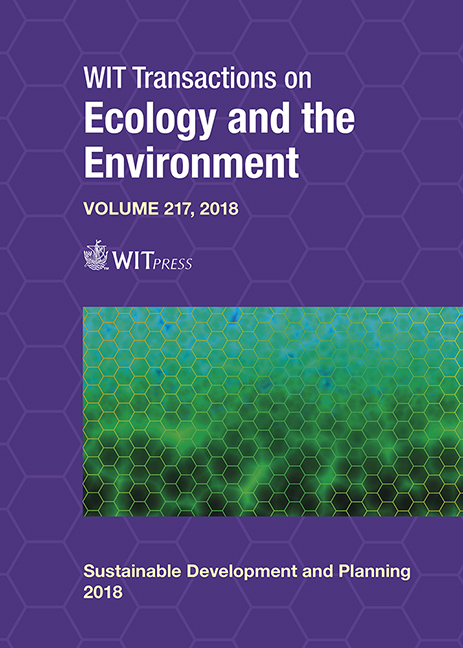ENERGY TRANSITION FOR THE DECARBONISATION OF URBAN NEIGHBORHOODS: A CASE STUDY IN SEVILLE, SPAIN
Price
Free (open access)
Transaction
Volume
217
Pages
9
Page Range
893 - 901
Published
2018
Size
793 kb
Paper DOI
10.2495/SDP180751
Copyright
WIT Press
Author(s)
RICCARDO M. PULSELLI, MATTEO MACCANTI, MADELYN MARRERO, ANDY VAN DEN DOBBELSTEEN, CRAIG MARTIN, NADIA MARCHETTINI
Abstract
A method of greenhouse gas inventory has been developed for evaluating the environmental implications of civilian life, in terms of carbon emission, according to citizens’ behaviour and to the condition of buildings, local infrastructures and services. The assessment focuses on energy use for housing, mobility, impacts of waste and water management. All factors refer to different spatial scales, ranging from the regional, urban neighbourhood, right through to the single-family household. Based on site-specific data, carbon accounting has been performed in Seville, firstly focussing on the provincial scale, then on the urban neighbourhood of Barrio Tiro de Línea. Both quantitative information and a uniquely citizen-centred method of visual result representation have been provided and taken as a starting point for planning an energy transition and decarbonisation scenario. The graphical outcomes allow the selection of a series of carbon footprint mitigating measures to be potentially accomplished in the medium–long term. The procedure was tested during the City-Zen Roadshow, as part of the European Union FP7 City-Zen Project, and demonstrated a powerfully communicative and easily implementable method to inform policy makers and citizens, to raise awareness on real energy transition potentials and to address choices for decarbonisation.
Keywords
carbon accounting, carbon footprint, decision support system, forestland grabbing





